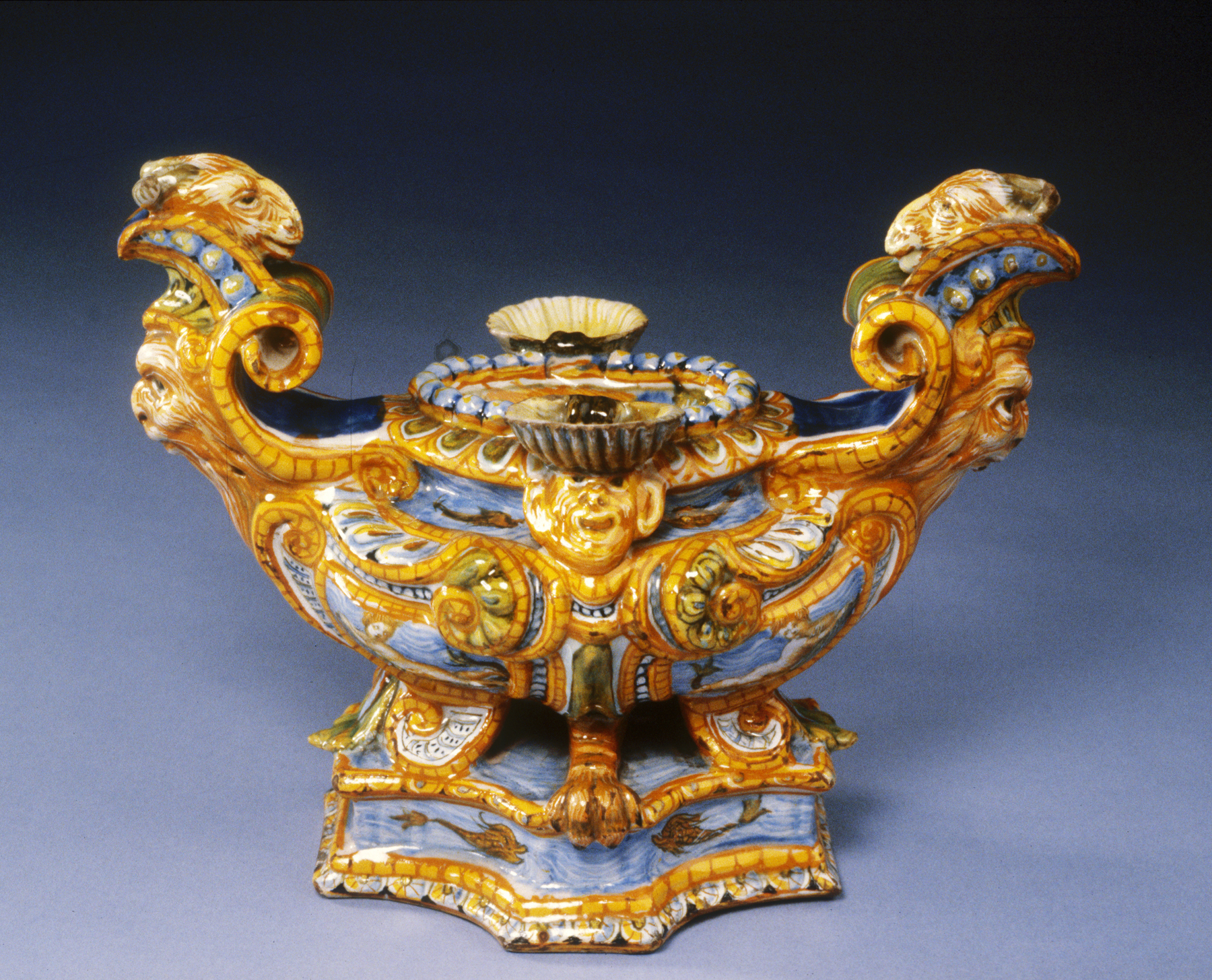Boat-Shaped Salt Cellar
(Renaissance Europe )
During the Renaissance, there was a great demand for clever, extravagant objects on the table, and containers for salt were essential components of maiolica tableware. On this salt cellar (from the French "salière" ), the artist depicts a goat’s head above a bearded mask on either end, while a mask is surmounted by a scallop shell on either side of the central receptacle. A standing cupid is painted around the opening for salt, and the cellar rests on two claw and two double-scroll feet which are set upon an octagonal base. Scrolls divide the cellar into eight compartments each of which is painted with a dolphin against blue water. The salt cellar’s boat-like shape and painted marine motifs reflect its function, as salt was a product of the sea. Salt was highly valued in the sixteenth century, as it was critical to preserve and enhance food before modern refrigeration techniques. Given its elaborate decorations, this salt cellar was likely used for ceremonial banqueting. It was produced by the Patanazzi family of Urbino, who were renowned during the latter sixteenth century for their maiolica wares. To see more works by the Patanazzi family, click on the name in the creator field; for more information on ‘maiolica’ in general, see 48.1336.
Provenance
Provenance (from the French provenir, 'to come from/forth') is the chronology of the ownership, custody, or location of a historical object.
Jacques Seligmann, Paris, by purchase; Henry Walters, Baltimore, 1912, by purchase; Walters Art Museum, 1931, by bequest.
Exhibitions
| 2002 | A Renaissance Gem Revealed: Petrarch's Triumphs Disbound. The Walters Art Museum, Baltimore. |
Conservation
| Date | Description | Narrative |
|---|---|---|
| 2/27/1969 | Treatment | repaired |
| 8/8/2005 | Treatment | cleaned |
Geographies
Italy, Urbino (Place of Origin)
Measurements
7 1/2 x 9 5/16 in. (19 x 23.7 cm)
Credit Line
Acquired by Henry Walters, 1912
Location in Museum
Accession Number
In libraries, galleries, museums, and archives, an accession number is a unique identifier assigned to each object in the collection.
In libraries, galleries, museums, and archives, an accession number is a unique identifier assigned to each object in the collection.
48.1361


